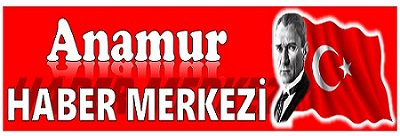Content
- Top 7 High-Dividend ETFs for September 2024
- Drivers of ETF premiums and discounts
- Better to give than to receive: Predictive directional measurement of volatility spillover
- Trading Volume Does Not Equal Liquidity
- Safe until they aren’t? Investigating liquidity illusion in exchange traded fund market
- Understanding The Difference Between Liquid Funds and Liquid ETFs
- Market liquidity and funding liquidity
There etf market making is a burgeoning body of literature examining various effects that ETFs have on their underlying U.S. stocks. However, there is a lack of studies that explore the effects of ETF ownership on stock characteristics of foreign firms. Last, but not the least, we use a large sample to compare U.S. firms to ADR firms.
Top 7 High-Dividend ETFs for September 2024
ETFs rely https://www.xcritical.com/ on arbitrage activities to keep the fund’s market price in line with its NAV. And so, when designing an index for an ETF to track, the product development team ensures the ETF basket is liquid enough to efficiently manage the fund from a liquidity perspective. This, in turn, allows market participants to effectively create/redeem ETF shares and keep prices in line with NAV. These transactions may impact the liquidity of underlying security markets. For less liquid securities, such as emerging market equities, market makers may not be able to source the securities.
Drivers of ETF premiums and discounts
When researching ETFs, you’ll also need to consider the fund’s expense ratio, or the fee the fund charges to manage and maintain it. Because most ETFs are passively managed, ETF expense ratios are typically pretty low compared with other types of funds. ETFs that offer exposure to other cryptocurrencies are still limited. Most crypto ETFs hold futures contracts or the stock of companies that either deal in or invest in the cryptocurrency markets. Use the dropdown menu to see the best-performing ETFs in general, or the best-performing ETFs for specific assets like bonds, gold and dividend stocks.
Better to give than to receive: Predictive directional measurement of volatility spillover
The ability to convert an asset to cash quickly in a highly volatile market can help to avoid forcibly selling at an unfavorable price. They are an easy to use, low cost and tax efficient way to invest money and are widely available commission free on most online brokerage accounts and through financial advisors. Because ETFs are traded on stock exchanges, they are easily bought or sold.
Trading Volume Does Not Equal Liquidity
It is denominated in U.S. dollars and traded in U.S. financial markets. We first examine the percentage of ADR shares held by ETFs (also referred to as ETF ownership of ADR shares) and find that ETF ownership of ADRs increased from 0.21 % in 2001 to 3.6 % in 2018. This pattern of increase is consistent with the counterpart domestic U.S. firms, which experienced a larger increase in ETF ownership from 0.23 % to 11.18 % during the same period. The average number of ETFs that a typical ADR held also increased from 6.2 to 17.6 during the same period. Unlike mutual funds, ETFs trade intraday on stock exchanges at market-determined prices. But what’s really unique about ETFs — and especially relevant in market stress — is that their liquidity is supported by two trading markets.
Safe until they aren’t? Investigating liquidity illusion in exchange traded fund market
They can provide research, financial planning, estate, and superannuation services as well as access to initial public offerings. ETFs help investors gain exposure to a range of investment strategies, geographic regions and asset classes, and can be bought as simply as buying a share. In Jan. 2024, the Securities and Exchange Commission approved a handful of spot Bitcoin ETFs, which directly track the price of Bitcoin.
Understanding The Difference Between Liquid Funds and Liquid ETFs
The creation and redemption process ultimately ensures there is sufficient inventory to fill investors’ orders. It allows large buy or sell trades to be executed in the ETF with little or no impact to the market. It’s important for investors to consider the spread because it affects the cost of trading an ETF. Because ETFs hold multiple securities in the portfolio, the spread of those securities also influences the spread of the ETF.
ETFs provide greater access to different markets
While the shares of ETFs are tradable on secondary markets, they may not readily trade in all market conditions and may trade at significant discounts in periods of market stress. These two layers of ETF liquidity stem from how they are created and redeemed. And assessing an ETF’s total liquidity begins with understanding the creation and redemption process. The profiles of these two similar ETFs can lead to different relative levels of liquidity. Investors might find it easier and more cost-effective to trade shares of Alpha ETF than Beta ETF, despite both ETFs tracking the same index.
Brex Treasury is not a bank nor an investment adviser and a Brex business account is not an FDIC-insured bank account. Review the background of Brex Treasury or its investment professionals on FINRA’s BrokerCheck website. Business challenges and emergencies don’t just occur on a personal or industry-specific scale. Fortunately, you don’t have to put your personal assets in jeopardy to build credit and win financing for your business. Brex’s corporate card is tailored to the needs of startups and requires no personal guarantee.
- Trading on exchanges provides greater liquidity, and transparency in pricing and execution, which can beneficial to investors in the more opaque, over-the-counter bond markets.
- As a global investment manager and fiduciary to our clients, our purpose at BlackRock is to help everyone experience financial well-being.
- Knowing exactly what you own is important information you need when making financial decisions.
- This pricing difference results in an inherent premium since the midpoint of the bid-ask spread on the ETF is typically going to be higher than the bid price of the underlying bonds.
- These newly created ETF shares are then introduced to the secondary market, where they are traded between buyers and sellers through the exchange.
- The biggest differences between mutual funds and ETFs are in how they’re priced, purchased and sold.
- Liquidity plays a crucial role in the financial market, affecting asset pricing and market stability (e.g., Pástor & Stambaugh, 2003).
At the market’s close, fewer firms may make markets in an ETF as market participants try to limit their risk, so fewer shares may be listed for purchase and sale than at other times of the day. The appearance of premiums and discounts is a natural outcome of the relationship between the supply and demand of ETF shares and the underlying securities. For larger trades, the specialist can consult with market makers to help you maximise potential liquidity in the ETF. The Vanguard capital markets specialist will know whether your requested trade size is large enough to engage a market maker or whether liquidity is naturally available for your order. A large order for one product may not be a large order for another. Like a mutual fund or a closed-end fund, ETFs are only an investment vehicle—a wrapper for their underlying investment.
Our paper investigates market-level determinants of the liquidity spillover between the ETF and its underlying portfolio. Liquidity spillover shares similar market-level determinants to liquidity commonality. These findings are consistent with the “wealth effect” theory of financial contagion of Kyle and Xiong (2002), which argues that increased risk aversion in the marketplace intensifies liquidity spillover among asset classes. Visibly, investors can see the first layer of liquidity in the form of prices to buy and/or sell ETF shares on the exchange (known as average daily trading volume, ADV).
The potential for large swings will mainly depend on the scope of the fund. An ETF that tracks a broad market index such as the S&P 500 is likely to be less volatile than an ETF that tracks a specific industry or sector, such as an oil services ETF. ETFs are dependent on the efficacy of the arbitrage mechanism in order for their share price to track net asset value.
If you have a higher number of liquid assets, you’re also more likely to get better loan terms and interest rates — a must-have for startups. Non-liquid assets offer long-term gains that shouldn’t be discounted either. The 2008 financial crisis, the worst U.S. economic disaster since the Great Depression, sent the global stock market spiraling. A sweeping crisis isn’t as likely as losing a client or dealing with an unexpected bill, but hard cash is almost always a safe bet.
An individual block can represent a company (Apple) or country (Mexico), but together they form an industry (technology) or a continent (Latin America). As a result of money laundering regulations, additional documentation for identification purposes may be required when investing in a fund referred to on this website. Important Risk Information There can be no assurance that a liquid market will be maintained for ETF shares. These desks actively transact in the underlying ETF to dynamically hedge their position(s), as they facilitate transactions on a variety of financial instruments for institutional clients. Additionally, ETFs seeking to track indices linked to other structures, such as swaps and futures, are often used in relative value arbitrage between vehicles.
If you’re trying to determine how to start building up liquid assets, you can’t go wrong with creating an emergency fund for your business. From there, you can work with a financial advisor to determine whether you have the ideal combination of liquid and non-liquid assets backing your business ventures. You should be able to recognize liquid assets with confidence, and have some idea as to which assets could be a worthwhile investment. It’s a major indicator of how prepared you are for economic changes and emergencies, and whether you’re putting your cash to good use. The most common examples of non-liquid assets are equipment, real estate, vehicles, art, and collectibles.
It is important to be aware of trading fees when comparing an investment in ETFs with a similar investment in a mutual fund. All registered investment companies, including TrueShares, are obliged to distribute portfolio gains to shareholders at year-end regardless of performance. Trading in TrueShares ETFs will also generate tax consequences and transaction expenses. Tax consequences of dividend distributions may vary by individual taxpayer. Before investing, carefully consider the TrueShares ETFs investment objectives, risks, charges and expenses.
The size of an ETF measured by its assets under management (AUM) likewise doesn’t necessarily dictate its liquidity. Even ETFs with smaller AUM can have high liquidity if they track a liquid index or sector and have active APs facilitating the creation and redemption process. While trading volume can indicate liquidity, it’s not the whole story. An ETF can have good liquidity even with lower trading volumes because of the creation and redemption mechanisms. If creations and redemptions are easily facilitated, the actual trading volume in the ETF may not matter as much. Alternatively, even if an ETF has a high trading volume and a lot of interest, but the underlying shares are illiquid, APs may find engaging in creations and redemptions difficult.




